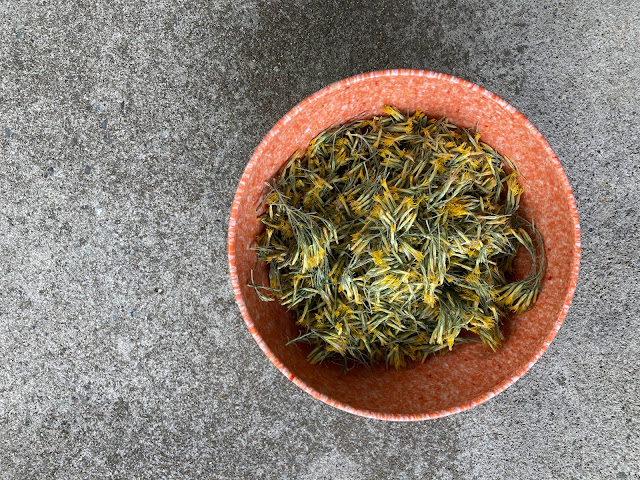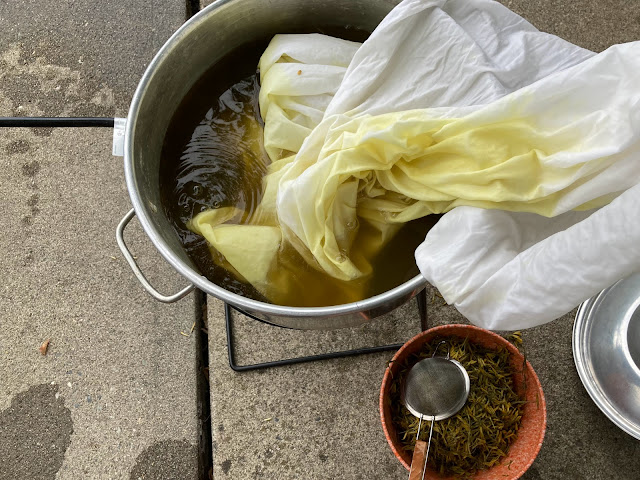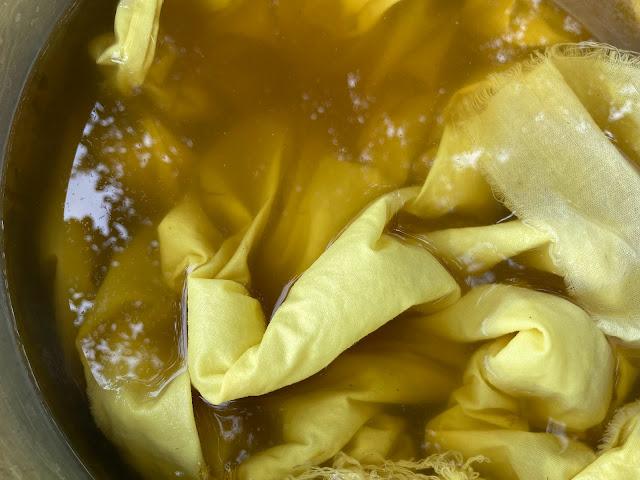I've wanted to make a natural dye with rabbitbrush for the past few years. I took an online course from Aaron Sanders Head last summer and learned a lot about the natural dye process, but I hadn't explored beyond indigo and turmeric. I went kayaking in Grant County and noticed a ton of rabbitbrush, so collected blooms and knew it was the time to finally try it! I can't believe the results!
Rubber Rabbitbrush is a native plant in the Shrub-Steppe that blooms in the early fall. I love it for its vibrant yellow blooms. You can tell time by the plants of the Shrub-Steppe. I know fall is here when the yellow blooms of rabbitbrush appear. I had heard they produce a natural dye, but there wasn't much information online. I found a digital pdf that mentioned it was a common plant to use for dye with indigenous groups living in shrub-steppe landscapes. I found one post about rabbitbrush dyeing, but it didn't have much information. The sparse information gave me enough curiosity to try it.
I used two yards of cotton fabric. I didn't have soda ash, so I opted for a hot second wash in the washer. All sources highly recommended scouring the fabric. I then used aluminum acetate to mordant. I finished the process with a chalk bath. While the fabric was soaking, I started to simmer the rabbitbrush blooms in another pot. Most sources recommend boiling for an hour. I think I was a little over an hour. Then I introduced the mordant fabric and left it in the hot water. I immediately saw the color. After an hour, it was already a decent shade of yellow, but knowing it would fade, I left it overnight and am so happy with the final color.








No comments:
Post a Comment